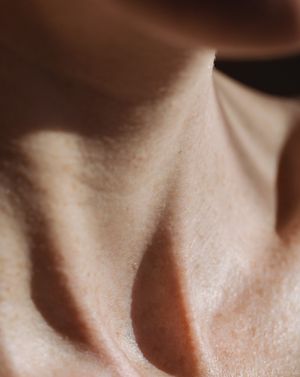Neck Resources
Youthful Neck Anatomy and Neck Lift Surgery
Dr. Jeffrey Harmon
The neck is a common area patients seek improvements in with surgery. Signs of aging in the neck are the result of loosening muscle and skin and sometimes the accumulation of fat. The medical literature recognizes youthful contours and angles to the neck and jawline which surgeons can strive for. However, all patients are not born with these features. In fact, there probably is no true “ideal” neck which every patient possesses in youth.
There are many approaches to a neck lift. My approach is through a deep plane neck lift in the central neck in addition to a deep plane lift of the sides of the neck through the extended deep plane facelift . I feel this approach can provide the most comprehensive and longest-lasting improvements in the appearance of the neck. It is important to seek not only a fellowship-trained but also a double board-certified facial plastic surgeon if you have aesthetic concerns about your face and/or neck. It is important to have a discussion with your surgeon about what can and cannot be accomplished with surgery to treat age-related changes to the neck.more
Neck Liposuction Versus a Neck Lift: Which Procedure is the Most Appropriate for Me?
Dr. Jeffrey Harmon
Neck liposuction and a neck lift procedure each address specific concerns about the neck and the area under the jaw. It is important to seek not only a fellowship-trained but also a double board-certified facial plastic surgeon if you have aesthetic concerns about your face and/or neck.more
What is Lymphatic Massage and What Can it Do After Facelift and Neck Lift Surgery?
Dr. Jeffrey Harmon and Dr. Ricci Hoover
Lymphatic massage, otherwise known as Manual Lymphatic Drainage (MLD), is increasingly being employed to accelerate the recovery of cosmetic surgery patients, including those who have undergone facelift and neck lift surgery. Starting approximately 4 – 6 weeks after surgery, the goal of MLD therapy is to accelerate the resolution of any remaining post-operative swelling. This is based on the concept, albeit with limited evidence supporting it (1), that a significant contributor to post-operative swelling is the fact that the lymphatic drainage system needs time to heal after surgery. After all, swelling is expected after any surgery in the head and neck. Furthermore, swelling is expected to improve and resolve over a period of weeks to months after facelift and neck lift surgery, regardless of the intervention. MLD is believed to improve the flow of lymphatic fluid away from the treatment site(s) while the body is healing. We at Harmon Facial Plastic Surgery have found this to be one of multiple effective treatment options for normal post-operative swelling in our patients. It is important to have a consultation with your surgeon prior to considering any treatment, including MLD. It is also important to seek not only a fellowship-trained but also a double board-certified facial plastic surgeon if you have aesthetic concerns about your face and/or neck.more
What is Hemostatic Netting and Why Would It Be Used During Facelift and Neck Lift Surgery?
Dr. Jeffrey Harmon
You may have seen images or videos of hemostatic netting online: these images or videos are often extreme and unusual examples of patients who have just undergone a facelift and neck lift who have loops of dark suture quilted across their face and neck. Though they capture people’s attention, they are not necessarily good representations of the hemostatic netting technique. The images and videos distract from the reason(s) why surgeons consider using the technique. This blog post seeks to clarify what hemostatic netting is, why it is sometimes used, and where it is typically placed. While evidence of its effectiveness is more limited in the medical literature, the articles that have been published and anecdotal evidence both suggest that hemostatic netting can be effective in reducing the risk of bleeding post-operatively in certain clinical situations. It is important to seek not only a fellowship-trained but also a double board-certified facial plastic surgeon if you have aesthetic concerns about your face and/or neck. A consultation with a well-qualified surgeon will allow you to determine if the following approach is appropriate for you, because this technique may not be appropriate for every patient.more




